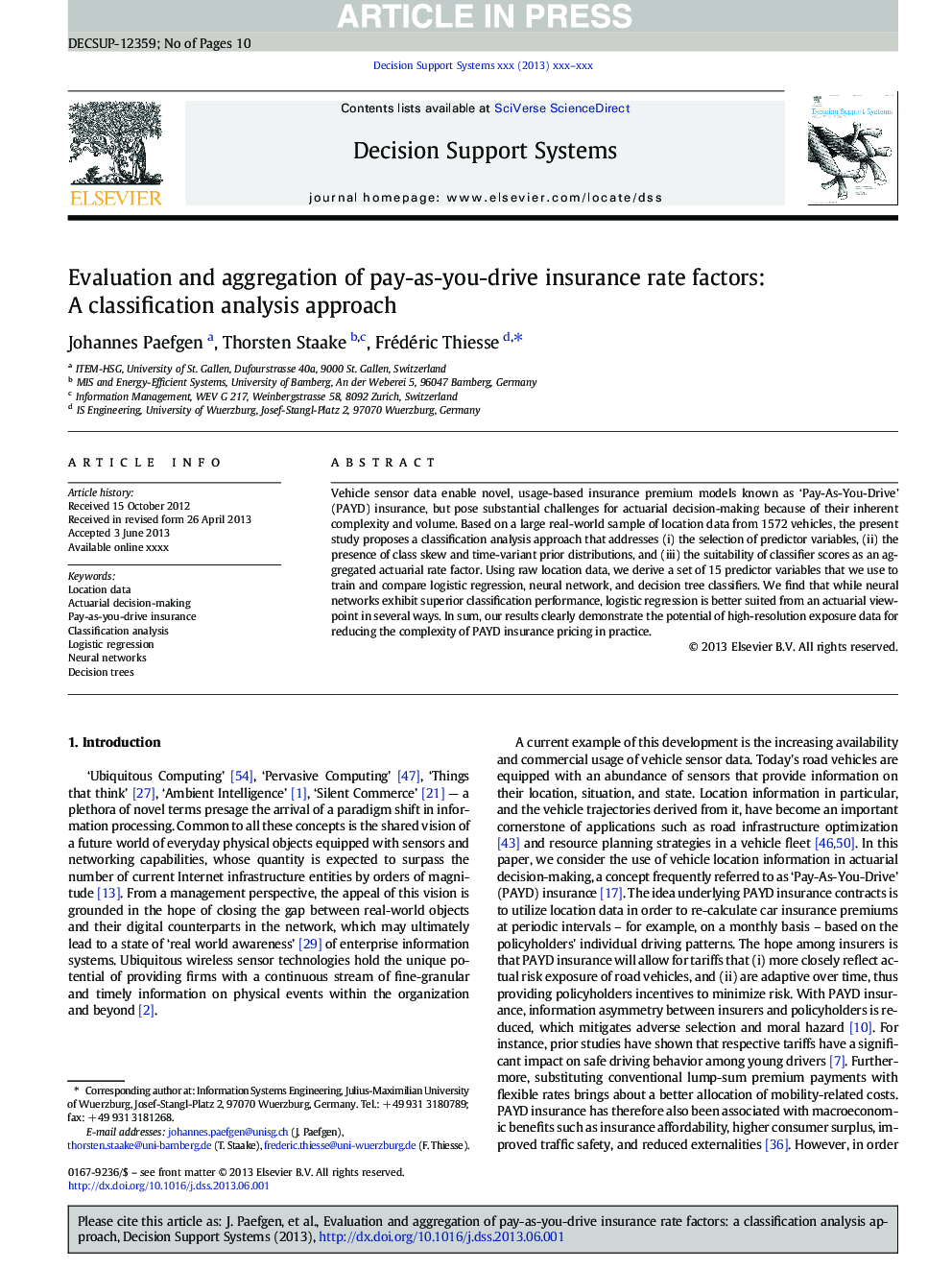| Article ID | Journal | Published Year | Pages | File Type |
|---|---|---|---|---|
| 6948597 | Decision Support Systems | 2013 | 10 Pages |
Abstract
Vehicle sensor data enable novel, usage-based insurance premium models known as 'Pay-As-You-Drive' (PAYD) insurance, but pose substantial challenges for actuarial decision-making because of their inherent complexity and volume. Based on a large real-world sample of location data from 1572 vehicles, the present study proposes a classification analysis approach that addresses (i) the selection of predictor variables, (ii) the presence of class skew and time-variant prior distributions, and (iii) the suitability of classifier scores as an aggregated actuarial rate factor. Using raw location data, we derive a set of 15 predictor variables that we use to train and compare logistic regression, neural network, and decision tree classifiers. We find that while neural networks exhibit superior classification performance, logistic regression is better suited from an actuarial viewpoint in several ways. In sum, our results clearly demonstrate the potential of high-resolution exposure data for reducing the complexity of PAYD insurance pricing in practice.
Related Topics
Physical Sciences and Engineering
Computer Science
Information Systems
Authors
Johannes Paefgen, Thorsten Staake, Frédéric Thiesse,
